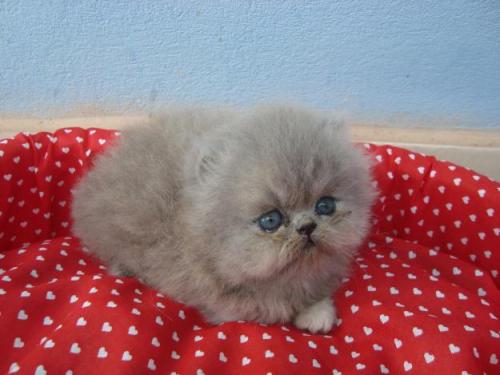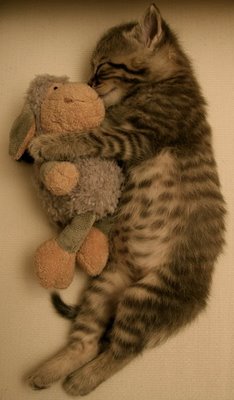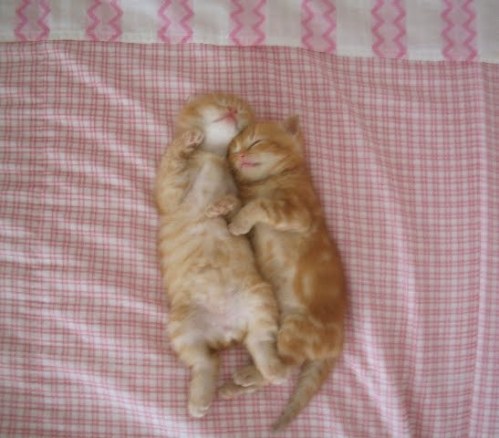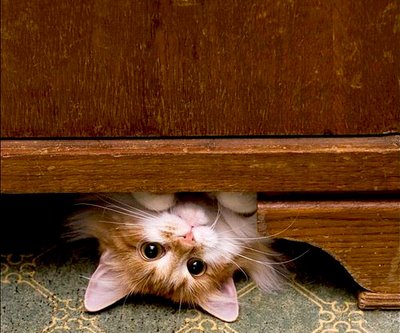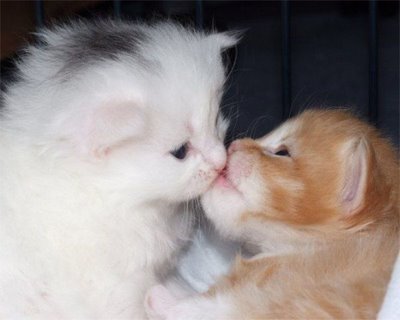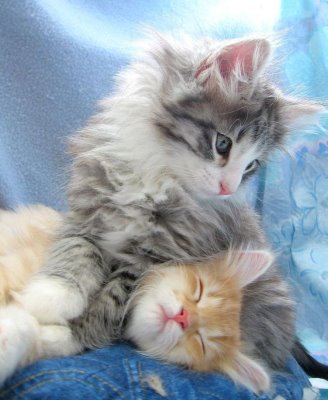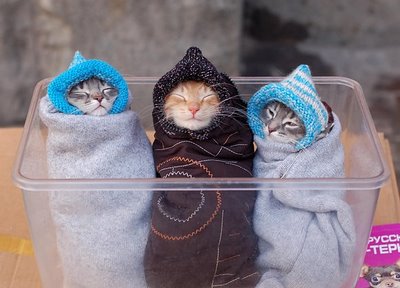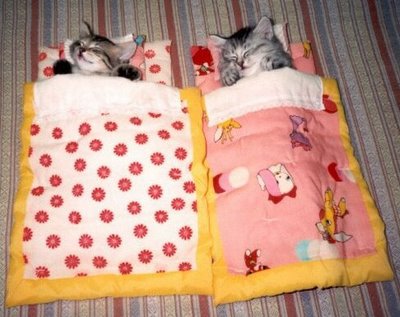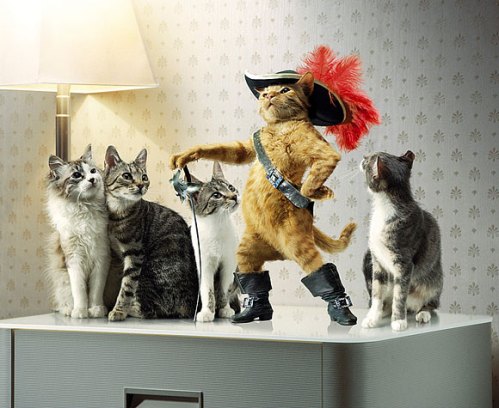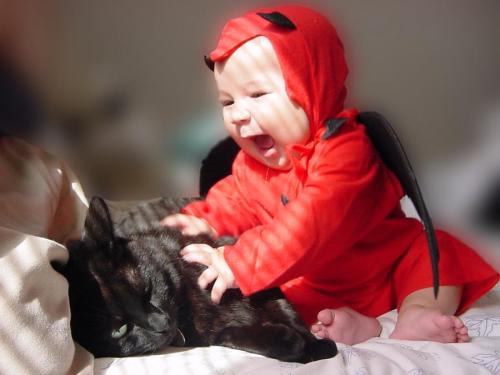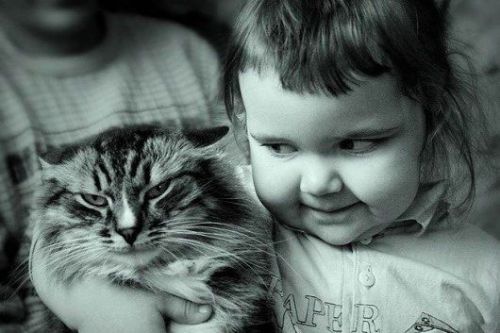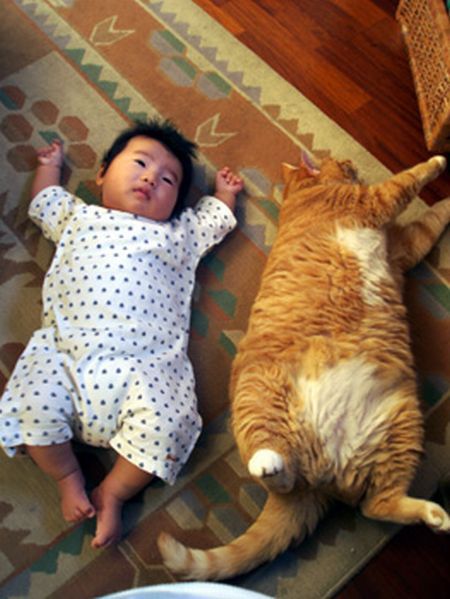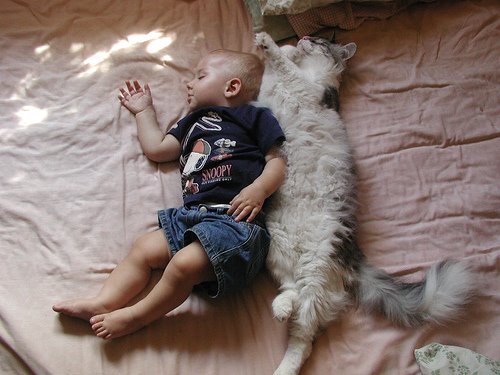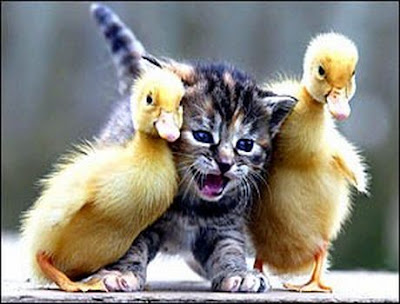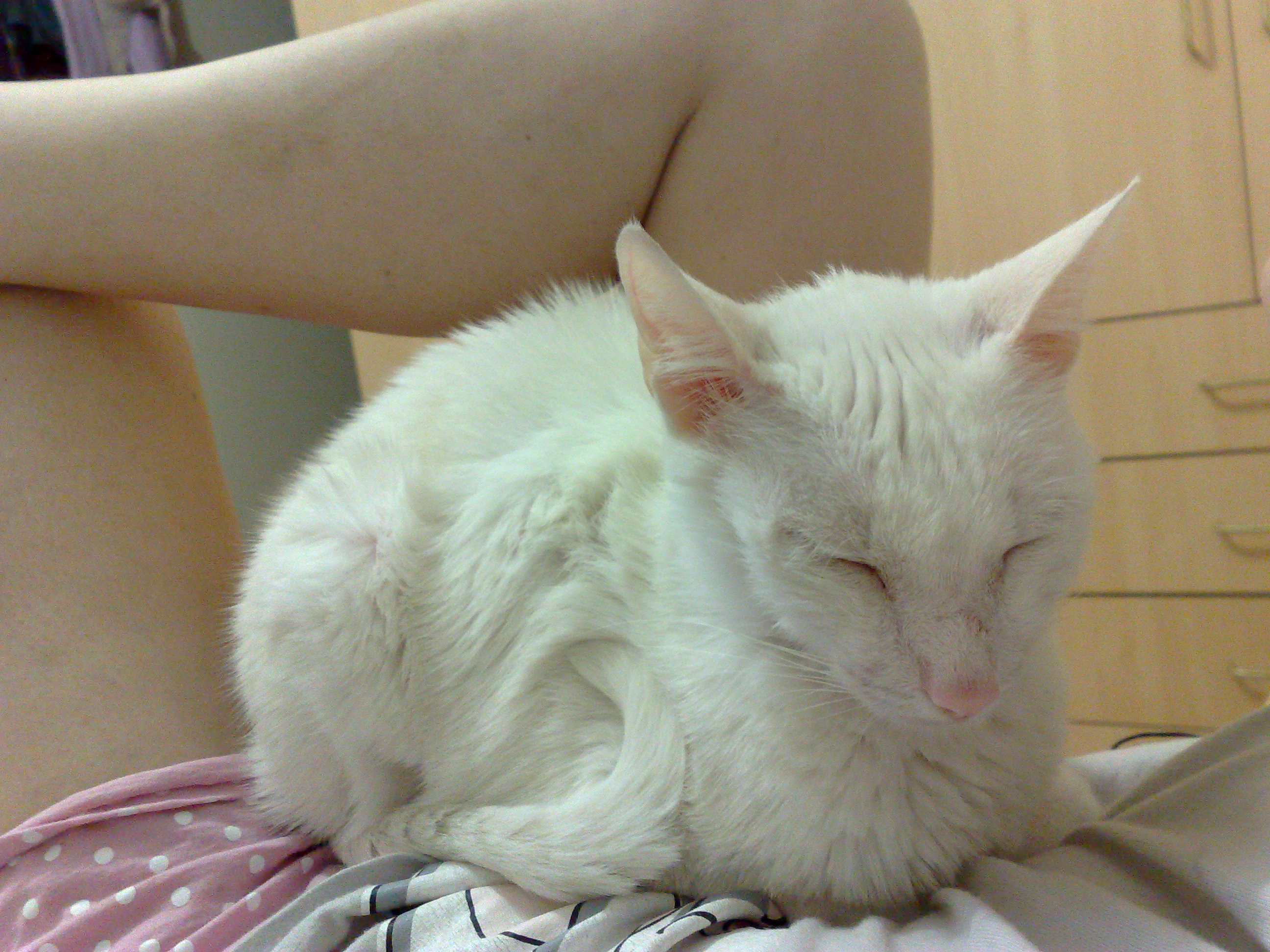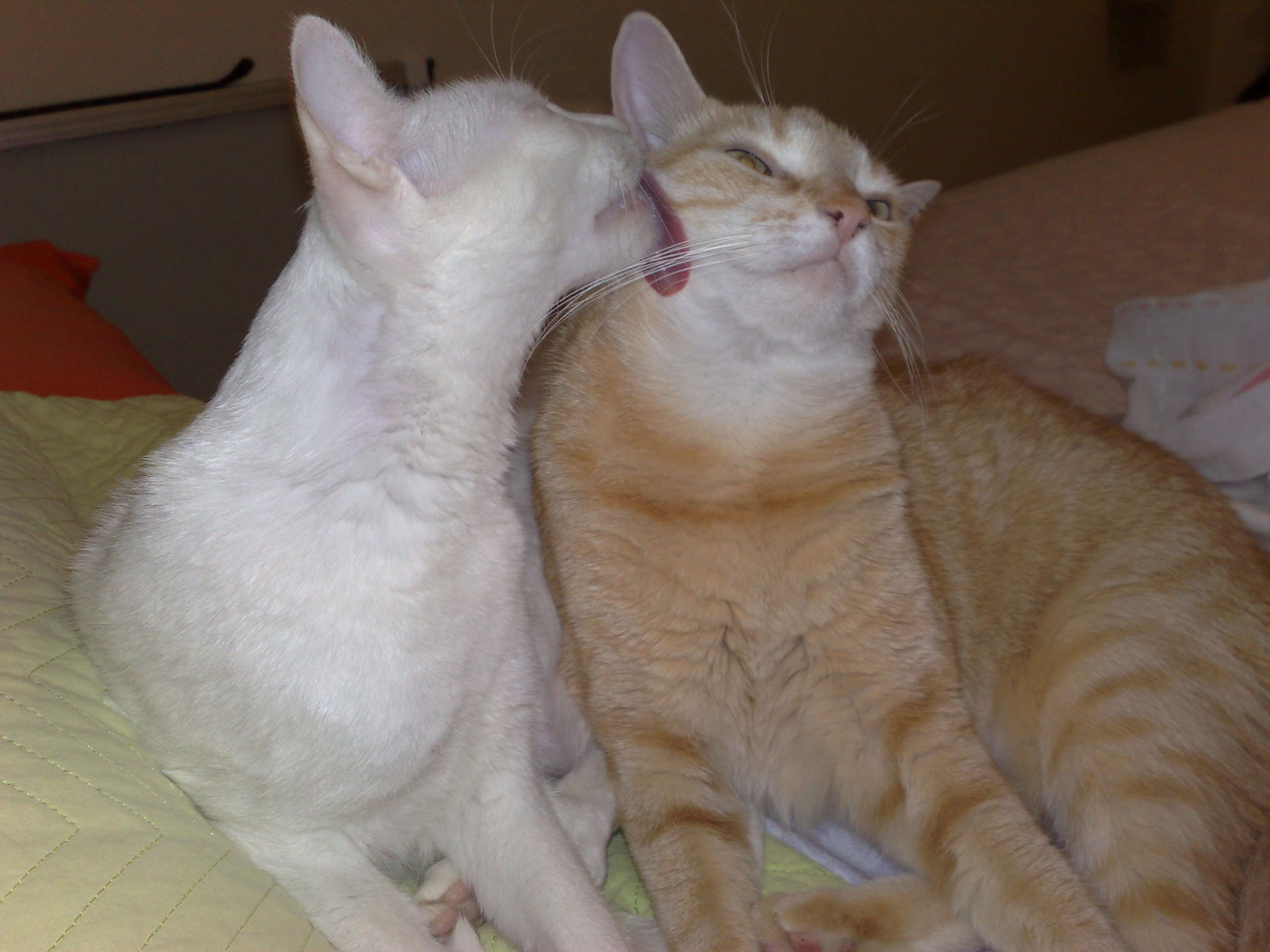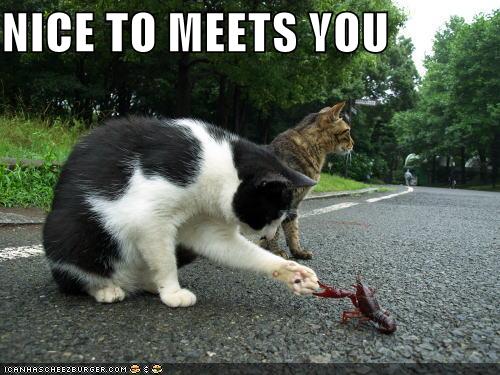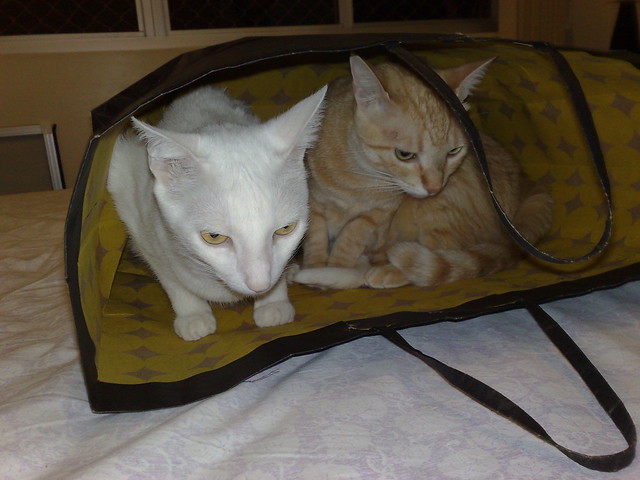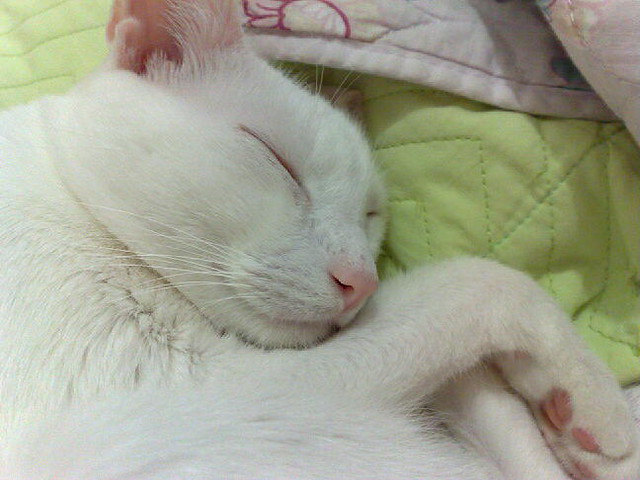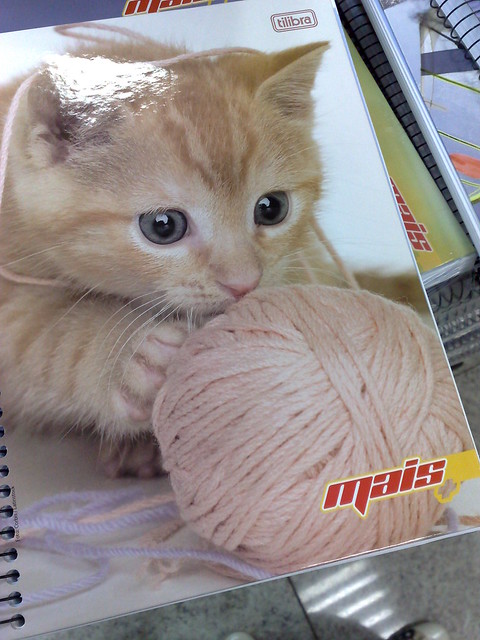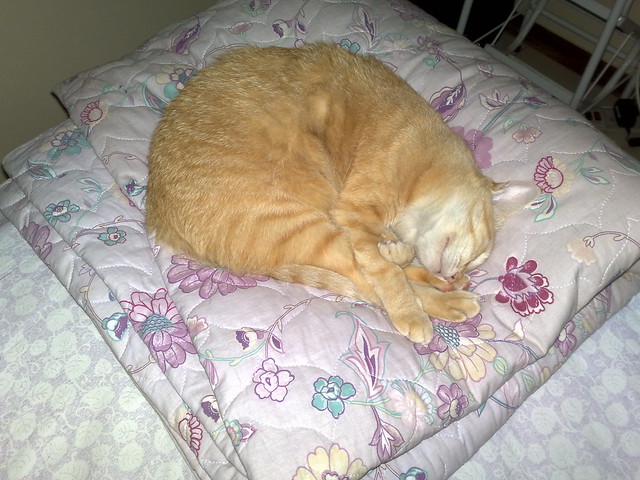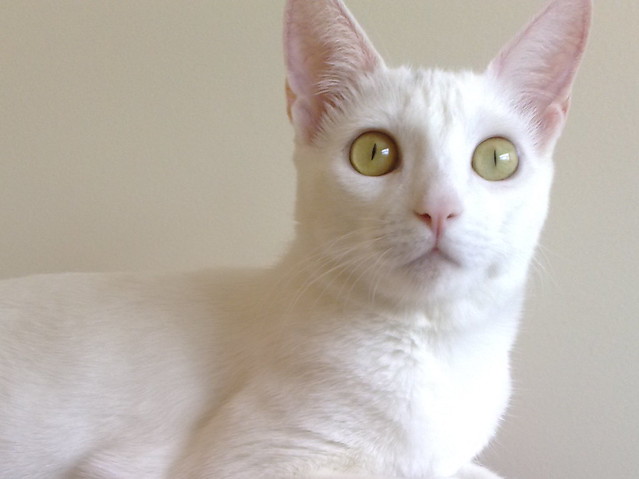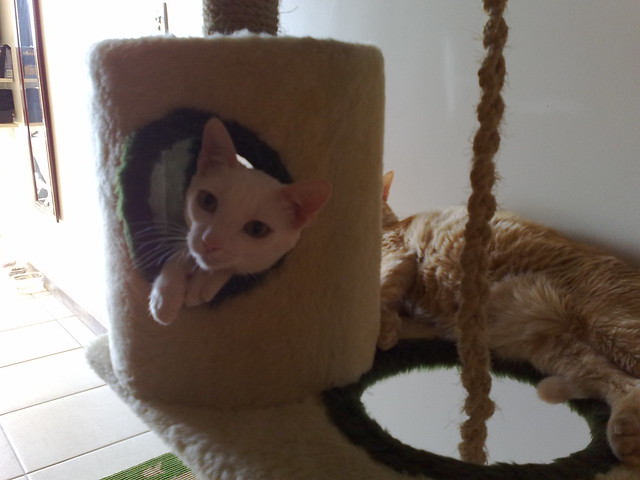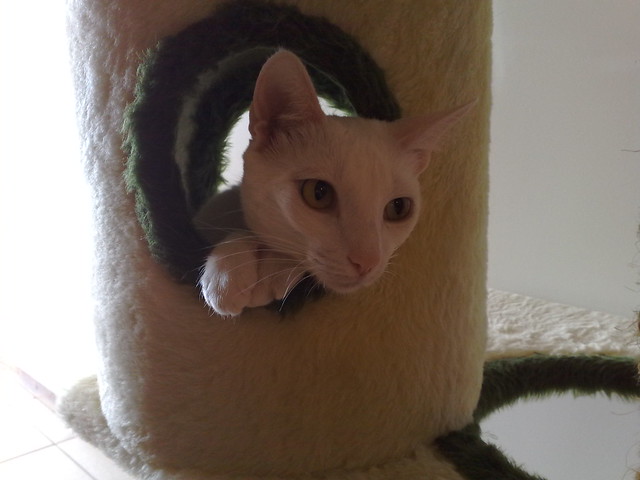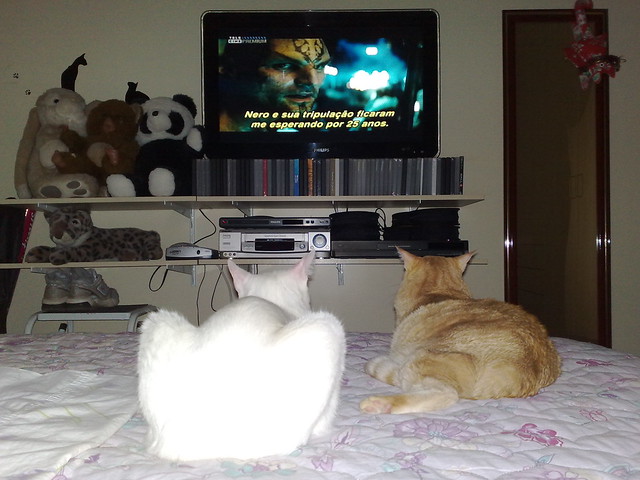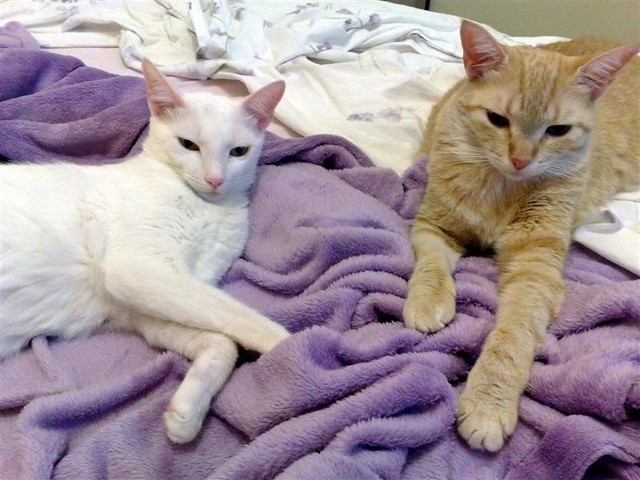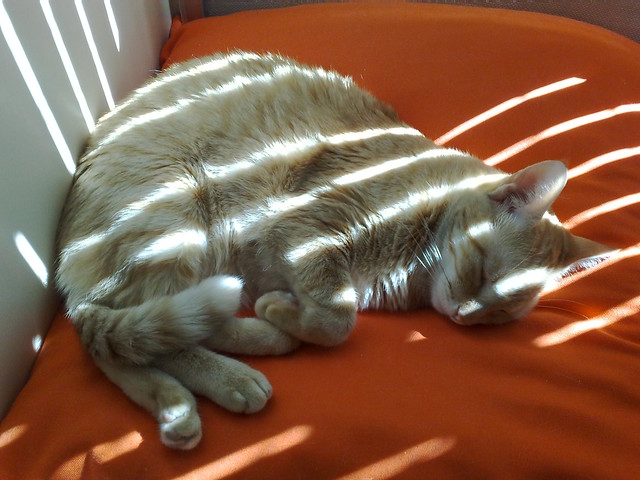Re: to catlovers
How Young is Too Young?
How old should a kitten be when it goes to a new home?
ISSUES: POTENTIAL PROBLEMS OF EARLY SEPARATION
Problems with immunity and health
"One of my main concerns with early separation is that kittens' immune systems are really developing between eight and twelve weeks of age," says Dr. Arnold.
"The immunity from their mother is wearing off, and the immunity from vaccination is just starting to take over.
During this time, they are more susceptible to illness, such as upper-respiratory problems and diarrhea."
Kittens generally receive vaccinations against panleukopenia, rhinotracheitis, and calici viruses (commonly called the "distemper combination" shot) at six, nine, and twelve weeks of age. However, immunity from vaccination does not happen immediately; shots can take up to ten days to be effective. Up until this time, kittens receive some measure of immunity through antibodies from their mother's milk, but this is also the age where they are beginning to wean.
Their immune system "kicks over" from immunity from mother's milk to immunity from vaccination.
During this time, their immune system is busy with this task, leaving the kitten less able to fight off other illnesses.
"The stress of going to a new home and being exposed to different germs can make the kitten more susceptible to illness during this time," adds Dr. Arnold.
Problems with eating and eliminating
"Weaning isn't an event; it's a process," says Dr. Arnold. "They don't just start eating food one day. They eat a little food, nurse, eat a little, nurse, and so on. Eventually they eat more than they nurse, and then stop nursing altogether. This doesn't happen by six or eight weeks of age."
Left to their own devices, mothers will eventually stop allowing kittens to nurse. With most cats this occurs naturally anywhere from eight to twelve weeks. However, this process is very important, as it teaches the kitten to learn to deal positively with frustration and denial. As the mother starts refusing to allow the kitten to nurse, which the kitten very much wants to do, she teaches the kitten how to cope with that frustration. Kittens who do not learn this lesson may develop behavioral problems.
Weaning is not simply a matter of getting a kitten to eat solid food. It's an important time when the kitten begins to assert its independence from its mother. This needs to be a gradual process.
"For the most part, my babies still nurse at 9 and 10 weeks, and sometime beyond," says Rosi Carroll of Bengals by RoJon. "I have never had a customer call me up after picking up one of my kittens, complaining about the kitten meowing for its mother. They settle right in to their new environment."
It's also common for too-young kittens to eat poorly and have litterbox problems. Many kittens at age six to eight weeks aren't consistently using the litterbox. I have found that my own kittens can take up to ten weeks to have litterbox habits down pat. And diarrhea can accompany the changes in diet and stress that come with a new home. Diarrhea can be life-threatening to a small kitten; severe dehydration and rapid weight loss is a serious problem when one has so little body mass to start.
The kitten socialization phase starts at about four weeks of age and can continue until up to fourteen weeks old. Kittens learn to explore their world through this period, under the comforting guidance of their mother. Between nine and fourteen weeks old, they learn from their mother and siblings how to interact with other cats. They learn how to recognize and interpret cat body language. Quite literally, a cat who misses out on this important social step may not learn how to "talk" to other cats.
It's also during this time when the kitten needs to be exposed to variety of people in a positive way so that it doesn't become afraid of different types of people. Improper early socialization is why some cats seem to be afraid of men, or of people with glasses, or other odd quirks.
Kittens need the time with their mothers and siblings to learn important life lessons - lessons that will make them happy, healthy, confident kittens. "I have seen kittens taken from their mother too young become cloth chewers and neurotic," says June Abbott Colwell of Velpaws Siamese. "[Kittens] not only need to be with their mothers, but also with their siblings. They learn proper acceptable play behavior from both mother and siblings. Kittens taken away too young are not as tolerant or as sure of themselves as older kittens."
There is a long article about it,here it is
http://www.breedlist.com/faq/young.html


